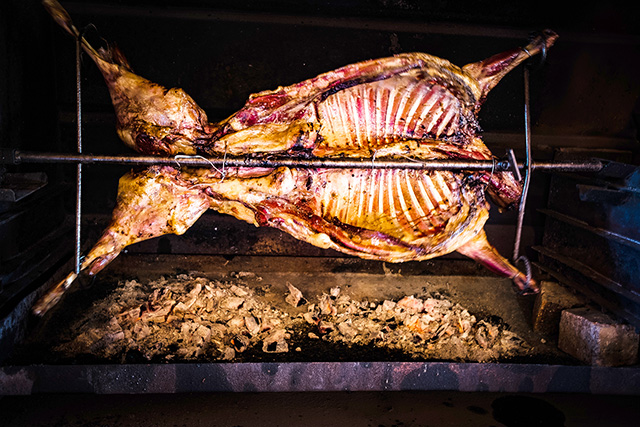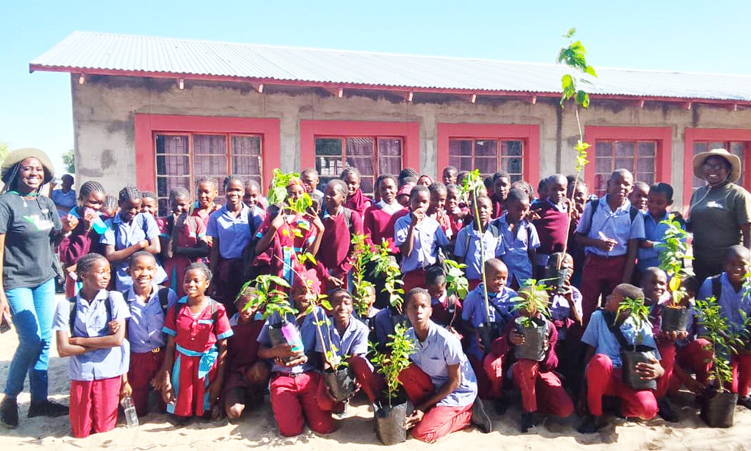The act of roasting whole animals over an open fire is possibly among the earliest methods used by humans to cook their food.
It may have started with something small, a fish or a bird or a small rodent or mammal. The size of the roasts most likely increased as humans developed hunting technology and got better at hunting larger prey.
Early humans cooked whole animals to preserve them. This involved various techniques such as smoking, roasting and drying. Whatever meat was being preserved would have been put on a rack or grid of sorts – most likely made from green branches – over an open fire. The cook controlled the temperature of the fire to suit the technique. For smoking and drying, the temperature required would be much lower than for roasting.
The speed of cooking could be controlled by a few factors that include:
• Whether or not the meat is cooked over direct or indirect heat
• The distance between the food and the heat source
• The size and thickness of the meat.
• The size and intensity of the heat source.
• The type of material used to make the fire and subsequently the coals.
Whether or not the meat is cooked in some vessel (such as a clay pot).
A simple platform-like structure built with freshly cut, green branches would have been one popular way to keep the meat positioned over the fire to facilitate smoking, roasting or drying the meat. Among the Arawak people, this technique of cooking over a grill was known as . Later on, this became barbecue, something familiar to most modern cultures.
Another tool commonly used to position fish or meat over an open fire would have been a simple spoke made from wood. One or more spokes would be threaded through the meat and placed on rocks or additional spokes used as support structures. The spit with meat would be rotated to ensure even cooking. This simple technique of roasting was so effective for cooking whole animals that we still use it today. All over the world, people regularly come together to spit-roast a whole animal as a festive meal.
Yet another possible early technique for roasting meat over an open fire would have been to hang the meat over the coals with rope. The meat would be tied with the thickest part closest to the fire and spun to rotate.
Modern spit-roasting is commonly done using rotisserie-style roasting. The meat is skewered on a metal rod called a spit and roasted over coals or in an oven. The roasting temperature is lower than for other types of roasting that require direct heat, and electrical motors are used to drive the rotisserie.
The meat constantly rotating on the spit creates a self-basting process. This process of adding moisture and flavour is further enhanced with the application of special basting sauces, especially when lean meats such as venison and fowl are cooked.
Some of the world’s most popular dishes are cooked on spits and rotisseries:
• Tacos al pastor (rotisserie pork tacos from Mexico).
• al pastor (whole goat cooked on a spit from South America, Spain and Portugal).
• kebab (rotisserie meat dish from Turkey).
• (rotisserie meat dish from the Middle-East).
• (rotisserie meat dish from Greece).
• (whole spit-roasted lamb from North Africa).
• (spit-roasted chicken from the Philippines).
• (spit-roasted pig from Spain, popular in the Philippines, Cuba, South America, Puerto Rico and parts of Indonesia).
• (whole lamb on the spit cooked for Easter in Greece).
• Whole-hog BBQ (whole pig cooked over an open pit from the United States).
Pork, lamb, chicken and venison are all popular choices of meat for spit-roasting. Larger animals such as camels and oxen are less common but not unheard of.
Spit-roasting a whole animal is done slowly and takes time, up to four hours for a medium-sized lamb weighing about 15 kilograms. Many cooks use basting sauces that contain fat (usually some kind of oil) and some flavouring agents such as herbs, spices and condiments such as soy sauce or oyster sauce. Sweet, sticky sauces should be applied toward the end of cooking to avoid burning the sugars in the marinade.
There are as many devices for spit-roasting whole animals as there are spit-roasting cooks. Built-in spits generally cook faster with the heat being locked in by the walls. This creates a cooking environment not unlike that of an oven. The most basic version is a simple spear with two spokes diagonally across, pegged into the ground next to an oven fire with low flame. The carcass is tied to the spokes and cooked standing upright next to the fire. This manner of spit-roasting is less heat-efficient and will take longer to complete.
Stay informed with The Namibian – your source for credible journalism. Get in-depth reporting and opinions for
only N$85 a month. Invest in journalism, invest in democracy –
Subscribe Now!








